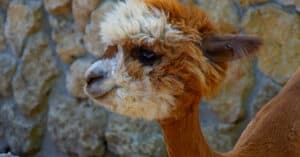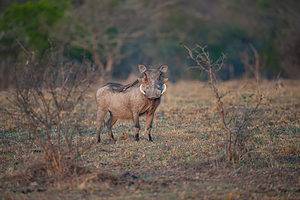The agility and athleticism of this mountain lion are out of this world! As the video below shows, this incredible predator is prepared to take plenty of risks to secure its prey. It leaps onto the alpaca’s back but gets hurled into the air and is very nearly trampled. In the end, it was all for nothing because the alpaca gets away.
Watch the Impressive Footage Below!
Where Are Guanaco Found?
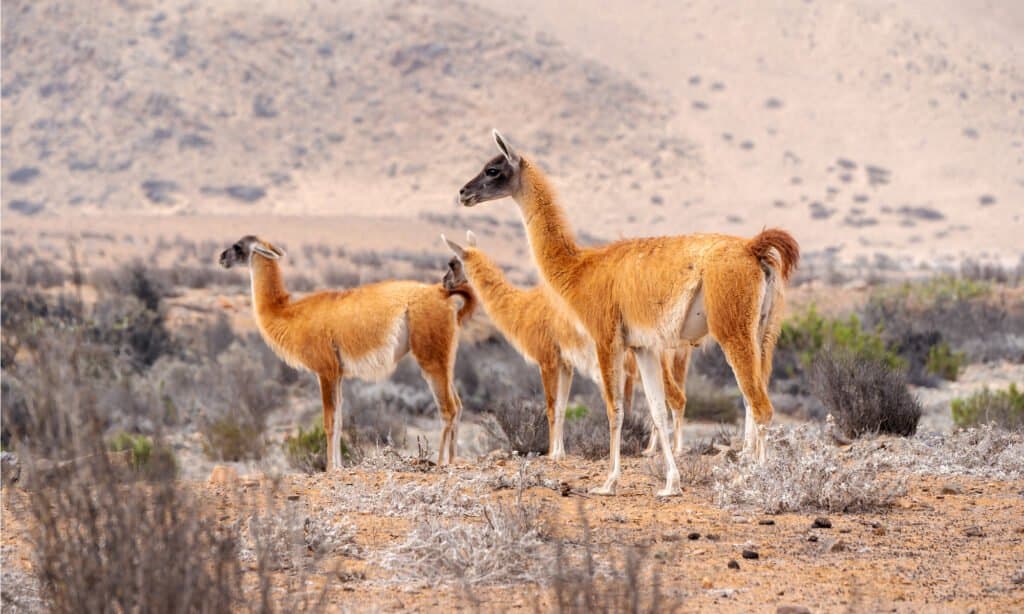
Guanacos can live in a variety of habitats such as deserts, shrublands, montane grasslands, savannas, and temperate forests.
©oscargutzo/Shutterstock.com
Guanaco are the wild versions of alpacas and are one of the largest terrestrial mammals in South America. Whilst alpacas are domesticated for their soft wool, guanacos live in the wild. They are found in Argentina, Bolivia, Chile, Paraguay, and Peru and occupy habitats from sea level up to around 12,800 feet or even more. There are only fragmented populations in many of these countries. For example, in Chile, they are found mainly in the Magallanes and Aysén regions in the south and Tarapaca region in the north.
These animals are able to live in a variety of habitats so you will find them in deserts, shrublands, montane grasslands, savannas, and temperate forests. Pumas are their main predator, so it is not surprising that they have learned how to fight off a puma attack!
How Are Guanaco Adapted to Living at High Altitudes?
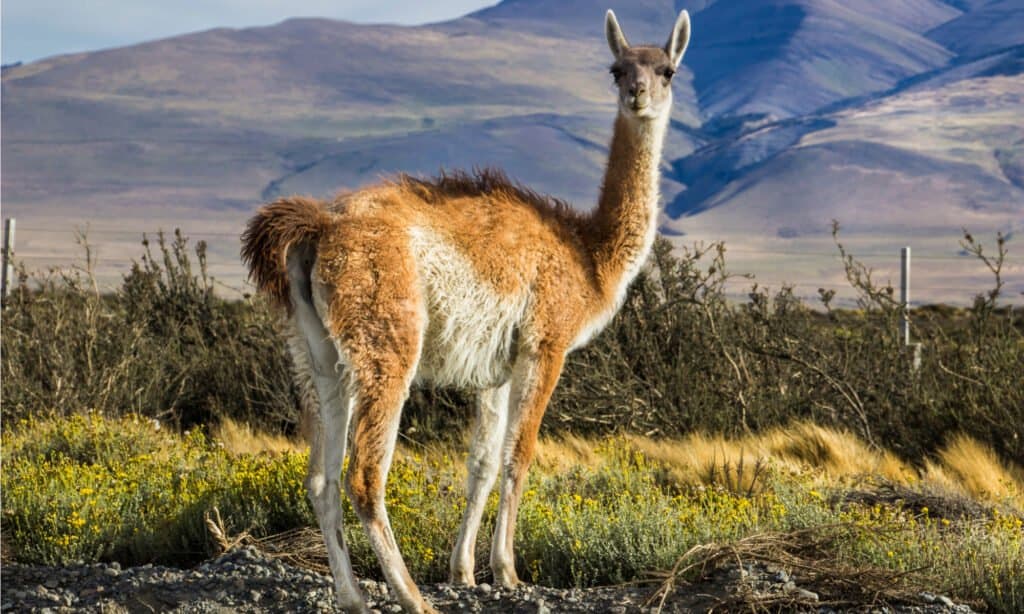
Alpacas are domesticated guanacos.
©abriendomundo/Shutterstock.com
Living so far above sea level is challenging on the body so guanacos are highly adapted for this environment. Their lips are split to make it easier to grasp the low-growing mountain vegetation. Also, they have a huge heart. It’s around 20 percent bigger than other animals of its size and can therefore pump more blood to the tissues. Atmospheric oxygen levels are lower at high altitudes so they also have more red blood cells than other species. This means that their blood can carry more oxygen.
The guanaco’s blood cells are also a unique shape. Because they are small but oval, they have a high surface area for absorbing oxygen. Furthermore, they contain loads of hemoglobin, which is the protein that binds with oxygen to transport it around the body.
As a result, they are able to maintain high amounts of resting blood glucose. So, when they need a sharp burst of energy (as we see in this clip), they are able to cope!
Is It Normal For An Alpaca to Fight a Lion?
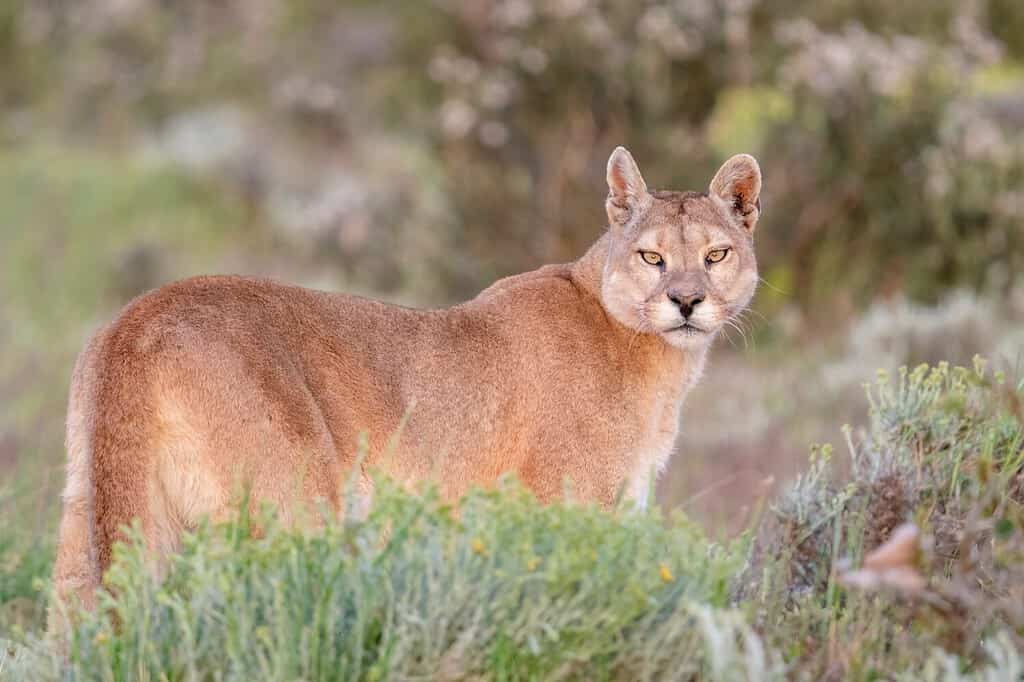
In their natural habitat, alpacas don’t often get the chance to fight lions.
©Rob Jansen/Shutterstock.com
It is intriguing to ponder whether it is within an alpaca’s normal behavior to exhibit such bravery and defiance as fighting back against a lion poised to devour it. Alpacas, typically known for their gentle demeanor and peaceful nature, rarely find themselves confronted with such dangerous adversaries in their natural habitats. Nevertheless, when faced with imminent danger, these remarkable creatures have been observed displaying unexpected acts of self-defense.
While kicking may not be the first instinct one associates with alpacas, this defensive response showcases their resourcefulness and innate survival instincts. It highlights the deep-rooted determination within these captivating animals to protect themselves from harm at all costs. However, it is crucial to note that such confrontations are rare occurrences in an alpaca’s life.
In general, alpaca behavior tends towards tranquility and sociability within their herds or human companionship. These endearing creatures thrive on forming strong bonds and engaging in communal activities like grazing together or engaging in playful antics. Their docile disposition often makes them ideal domesticated animals sought after for both fiber production and companionship.
The exceptional incident of an alpaca confronting a lion serves as a testament to the resilience hidden beneath their serene exterior—an awe-inspiring reminder that even the gentlest souls can rise up courageously when pushed beyond limits by extraordinary circumstances.
How Large are Guanacos? How Large are Pumas?
The average height of an adult guanaco is between 4 to 5.5 feet (1.2 to 1.7 meters) tall to the shoulder, with an average weight of 200 to 300 pounds (90 to 135 kilograms). These wild beasts are larger than domestic alpacas, who average 3 to 4 feet (0.9 to 1.2 meters) tall and weigh 100 to 200 pounds(45 to 90 kilograms).
Pumas, on the other hand, are smaller creatures (as you observed in the video). The size of a puma (also called a cougar or mountain lion) varies based on geographical location within the Americas and what subspecies it is. On average, it stands from 2.5 to 3 feet (75 to 90 cm) tall. Males weigh an average of 90 to 160 pounds (40 to 72 kg), while females are lighter at 80 to 120 pounds (36 to 54 kg). Males are generally more muscular and bulky than females.
Can Guanacos Spit Like Camels?
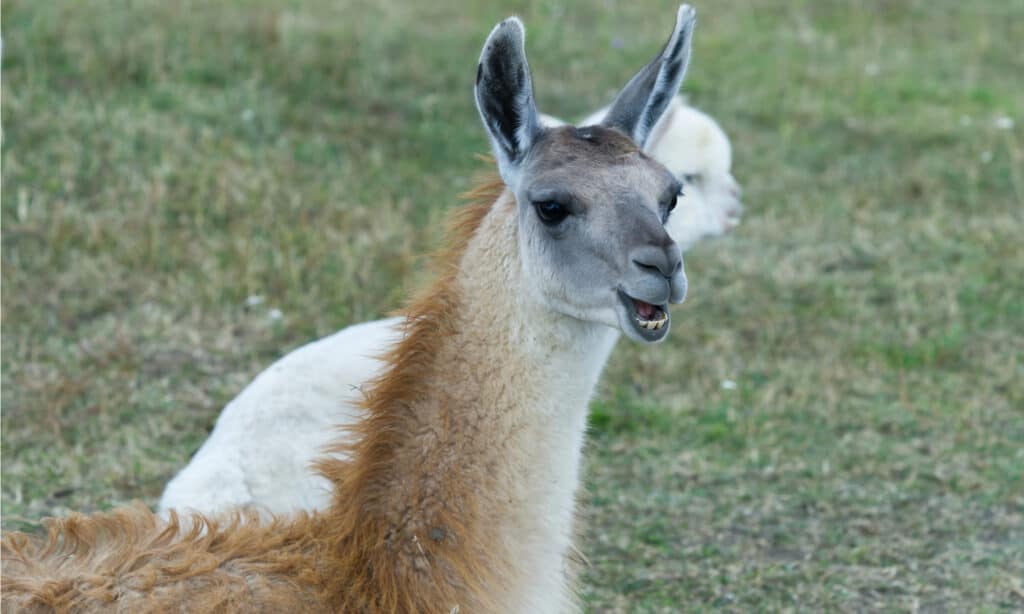
Guanacos spit a fowl, acidic brew for self-defense.
©Valeri Pavljuk/Shutterstock.com
The feisty guanaco may be one of the best spitters in the animal kingdom! Like their llama cousins, guanacos can spit at a distance of six feet with amazing accuracy. Their spit is a horrible mix of saliva, digestive juices, and undigested food. Spitting is used as a self-defense and to communicate with others. Since they can’t tell their friends what they had for dinner with words – perhaps they just spit it out to show them. Mostly, the guanaco’s amazing spitting abilities are used to scare away predators or to buy a little time to run away.
The photo featured at the top of this post is © oscargutzo/Shutterstock.com
Thank you for reading! Have some feedback for us? Contact the AZ Animals editorial team.




